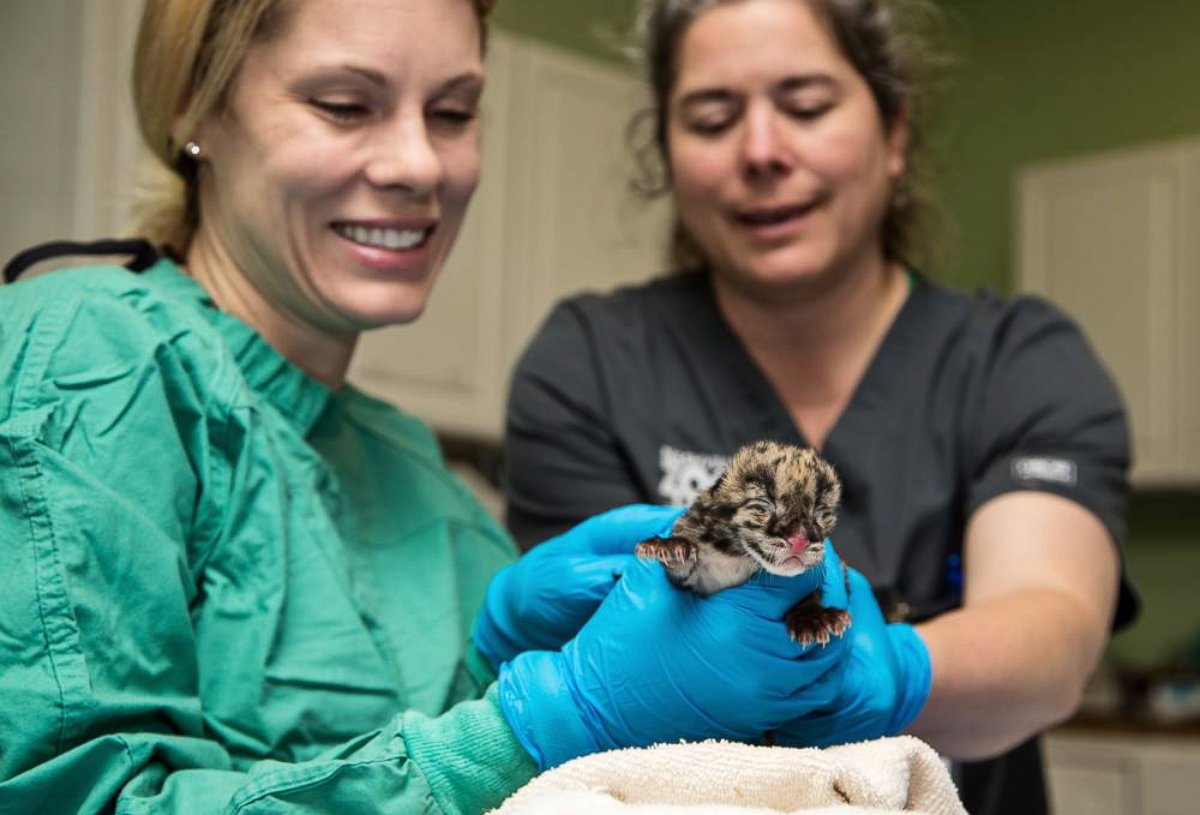A clouded leopard conceived through artificial insemination born at Nashville Zoo
Clouded leopards have a difficult time breeding outside their natural habitat.
— -- A male leopard cub born at the Nashville Zoo on Wednesday is the first of its species to be conceived using artificial insemination of cryopreserved -- frozen and then thawed -- semen, according to a joint announcement from the Smithsonian National Zoo and the Nashville Zoo.
Clouded leopards have been listed as a vulnerable species on the International Union for Conservation of Nature's red list of threatened species since 2008. The leopards have a hard time reproducing outside their natural habitat, and their wild populations continue to dwindle, according to the National Zoo.
“This is an enormous accomplishment for both Nashville Zoo and the team at the Smithsonian,” said Dr. Heather Robertson, director of veterinary services at the National Zoo. “It means we can collect and preserve semen from clouded leopard populations around the globe and improve pregnancy outcomes from [artificial insemination] procedures in this species.”
A live video broadcast today from the Nashville Zoo showed keepers bottle-feeding and monitoring the newborn leopard, who has yet to be named by researchers at the National Zoo.
The proud leopard parents are a female named Tula, who was born and raised at Nashville Zoo, and a male named Hannibal from the National Zoo in Washington, D.C. The cub will be raised by keepers in Nashville "to ensure survival and well-being" before he is introduced to a potential mate.
Video released by the zoos shows the cub taking its first crawls and handlers bottle-feeding it.

Clouded leopard cubs have difficulty reproducing in captivity because females and males who have already bonded with a mate will not rebond with a different mate later in life. Assisted breeding could allow scientists to "expand the genetic diversity of cubs without disrupting those established bonds," according to the National Zoo.
“This cub, the first clouded leopard offspring produced with cryopreserved semen, is a symbol of how zoos and scientists can come together to make positive change for animals and preserving global biodiversity,” said Smithsonian Conservation Biology Institute biologist Adrienne Crosier. “Collaboration is the key to conservation of clouded leopards, along with so many other rare and endangered species we care for and study.”
Clouded leopards are named for their thundercloud markings, according to the Point Defiance Zoo and Aquarium in Tacoma, Washington, which welcomed triplet cubs last year. Among the rarest of the world's cat species, they are considered so shy and elusive that scientists do not have an accurate estimate of their population in the wild.
The species are found in the Himalayan foothills from Nepal through mainland Southeast Asia and into China, according to the International Union for Conservation of Nature.




